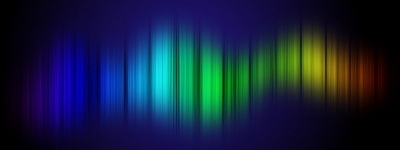

With the blurred layer selected, go to Layer->Mask->Add. Or convert input.png -color-matrix "1.638297872 0 0 0 0.803030303 0 0 0 1.111111111" output.png Rather than painting it and it looking obvious, we are going to use a radial gradient. And blue values to be 63/70ths of the current values. Green values to be 159/198th of the current values. So that means I wanted new pixels' R value to be 231/141ths of the current red value. The rest of the colors wanted to be changed equivalently. Specifically, because I knew a "master color" of the original image (green, in your case and mine) and I knew the "master color" in the desired result image (blue, in your case, orange in mine), I gave ImageMagick' -recolor/-color-matrix option a transformation matrix with values that reflected the differences in each of the RGB channels.įor example, in my case, the fully green color was R:141 G:198 B:63 and I wanted it changed to R:231 G:159 B:70. The different operator is either -recolor or -color-matrix, depending on ImageMagick version. Look at these examples.The first successful method I found to do the same sort of thing was to use ImageMagick, but with a different operator than the earlier-suggested -separate/-swap. To get Chrome-like effects try to use different enviroment-maps. See the examples above.Īnother possibility is the use of a different gradient. A little Blur (Radius 2) makes the Bumpmap a little bit smoother. Then select the Curves-Dialog and modify the text-profile. Create the text and blur it with a wider radius. The Key is the Image -> Colors -> Curves-Dialog. There is a much more flexible way to specify the surface of the Bumpmap.
:max_bytes(150000):strip_icc()/015-make-a-custom-gradient-in-gimp-1701680-d51df6e6ad1f49428a5177ea4099a826.jpg)
So you can select between a linear, spherical, logarithmic and a sinusoidial Bumpmap. Part II ¶Īt the Bumpmap-Options you can select different between four different Curves for Bumpmapping. Some other neat tricks can be found in the next part. Since the Lighting-Plugin doesn’t support antialiasing yet it is a good idea to render the image in the double size and scale it down for the final image. This is the result after a click on Apply. Move a point up to brighten the selected tones within the image, or move a point down to darken the tones. Step 2: Click along the white diagonal line to create adjustment points at various tone sections. I prefer a lower value in the “Maximum height” Bumpmap option. Step 1: Open the Color menu and select Curves. Select the “Enviroment-map”- and “Bumpmap”-Toggles and select the images in the appropriate notebook-pages. Then open a new RGB-Image with exactly the same size and start the Lighting-Plugin. To get a smooth transition do a Gaussian Blur on it. Open a new grayscale image in the desired size, fill it black and paint the white text on it.
:max_bytes(150000):strip_icc()/011-make-a-custom-gradient-in-gimp-1701680-95905b41a13e4a63b3a8e54cde57abf8.jpg)
The next step is to create a bumpmap for the text. Then select the “Golden”-Gradient in Dialogs -> Gradient Editor… and Filters -> Colors -> Gradient Map it to the image.

#Gimp gradient lighting full#
Then I did a Image -> Colors -> Auto-Stretch Contrast and a Filters -> Blur -> Gaussian Blur ( IIR) with a radius of 5 to get the full range of gray. It is important for a good effect to get different grays in the top right corner. I created it with Filters -> Render -> Solid Noise (X/Y-Size: 2.8, Detail: 1, Tileable). The trick is to use a good enviroment-map. Additionally it can map an enviroment-map to the image. This Plugin does a very good Bump-Mapping. It can be found at Filters -> Light Effects -> Lighting Effects.
#Gimp gradient lighting install#
It is not in the standard gimp-1.0 distribution, you have to install it yourself. Intention ¶ĭoesn’t the title look really valuable? To reproduce this effect you need the incredible “Lighting”-Plugin, created by Tom Bech and Federico Mena Quintero. Text and images Copyright (C) 2002 Simon Budig and may not be used without permission of the author.


 0 kommentar(er)
0 kommentar(er)
